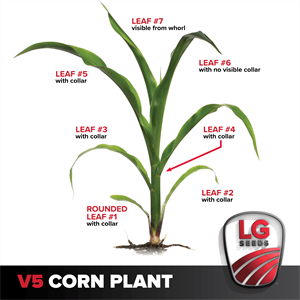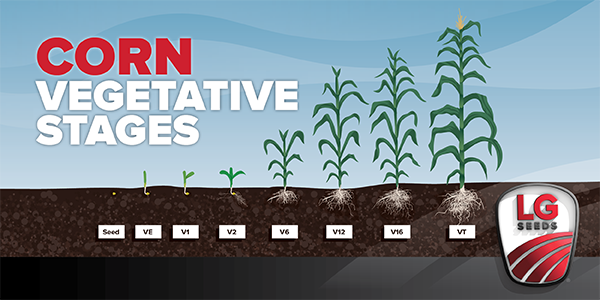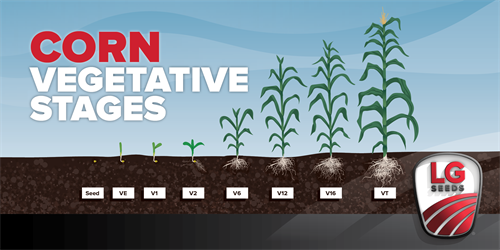AGRONOMIC RESOURCESTO SUPPORT EVERY SEASON
YOU CAN TAKETO THE FIELD
Corn Staging and Scouting: What You Should Know
Corn staging methods
Planting season is over and crops are emerging. It’s time to scout your fields.
A good scouting technique begins with knowing how to stage your crop and choosing a method that works best for your farm. There are two methods used to stage corn plants: leaf collar and “droopy” leaf

Leaf collar method- counts the number of leaves on a plant that have visible collars, starting with the rounded “thumb-shaped” leaf near the bottom of the plant and excludes leaves still in the whorl.
“Droopy” leaf method- begins with the rounded leaf of the plant but counts leaves in the whorl that are 50% exposed or "droopy” as the next vegetative stage.
Most older herbicides use the “droopy” leaf method when determining the stages that you can do an application- while newer labels use the leaf collar method. Keep in mind the method of staging you’re using and double check herbicide labels before application to your field. Applying herbicides too early (or too late) risks damage to your crop.
Scouting the stages
VE to V3
During the V2 to V3 stages, the plant switches from relying on the seed, to relying on and living off the root system. Nodal roots and root hairs are forming, providing structure and nutrients to the plant.
What to scout for:
- Emergence: How does your stand look? Is replant necessary?
- Nutrient deficiencies: Purpling, yellowing or striping
- Insects: Black Cutworm, White Grub, Seed Corn Beetles, Wireworms
- Seedling diseases: Pythium, Rhizoctonia, Fusarium and Phytophthora
- Weeds
V4 to V6
The growing point of a corn plant is below the surface until late V5 to V6. At this stage, any severe problem (such as frost damage or complete cut off of the plant) will result in little to no damage, meaning the plant can recover and still have a successful season. However, when the growing point is above ground, any serious damage will result in plant death.
What to scout for:
- Growth stages: Vegetative stages in which herbicides can be used
- Weeds: Note height and relative cover of plants for herbicide applications
- Nutrient deficiencies: purpling, yellowing or striping
- Insect damage: Corn Rootworm, European Corn Borer
V7 to VT
V7 to VT is a long period that is crucial to corn development. Root development is continued, and maximum row (ear length) and kernel numbers (ear width) are finalized. Ear development begins rapid growth as it reaches V16 to V18, making the plant sensitive to hot, dry conditions.
What to scout for:
- Diseases: Goss’s Wilt,Gray Leaf Spot,Eyespot
- Insects: Corn Rootworm, European Corn Borer
- Weeds
VT
All tassels are visible on the plant. Silk emergence will begin in two to three days, putting the plant in reproductive stages. Disease and insect damage is critical to scout for at VT through the reproductive stages, because loss of leaves and damage to silks at this point in the season will result in yield loss.
What to scout for:
- Diseases: Goss’s Wilt, Tar Spot, Northern Leaf Blight, Gray Leaf Spot
- Insects: Corn Rootworm, Corn Earworm, Japanese Beetles, European Corn Borer
If you have any questions or concerns with corn staging or scouting, contact your LG Seeds Agronomist for more information.






